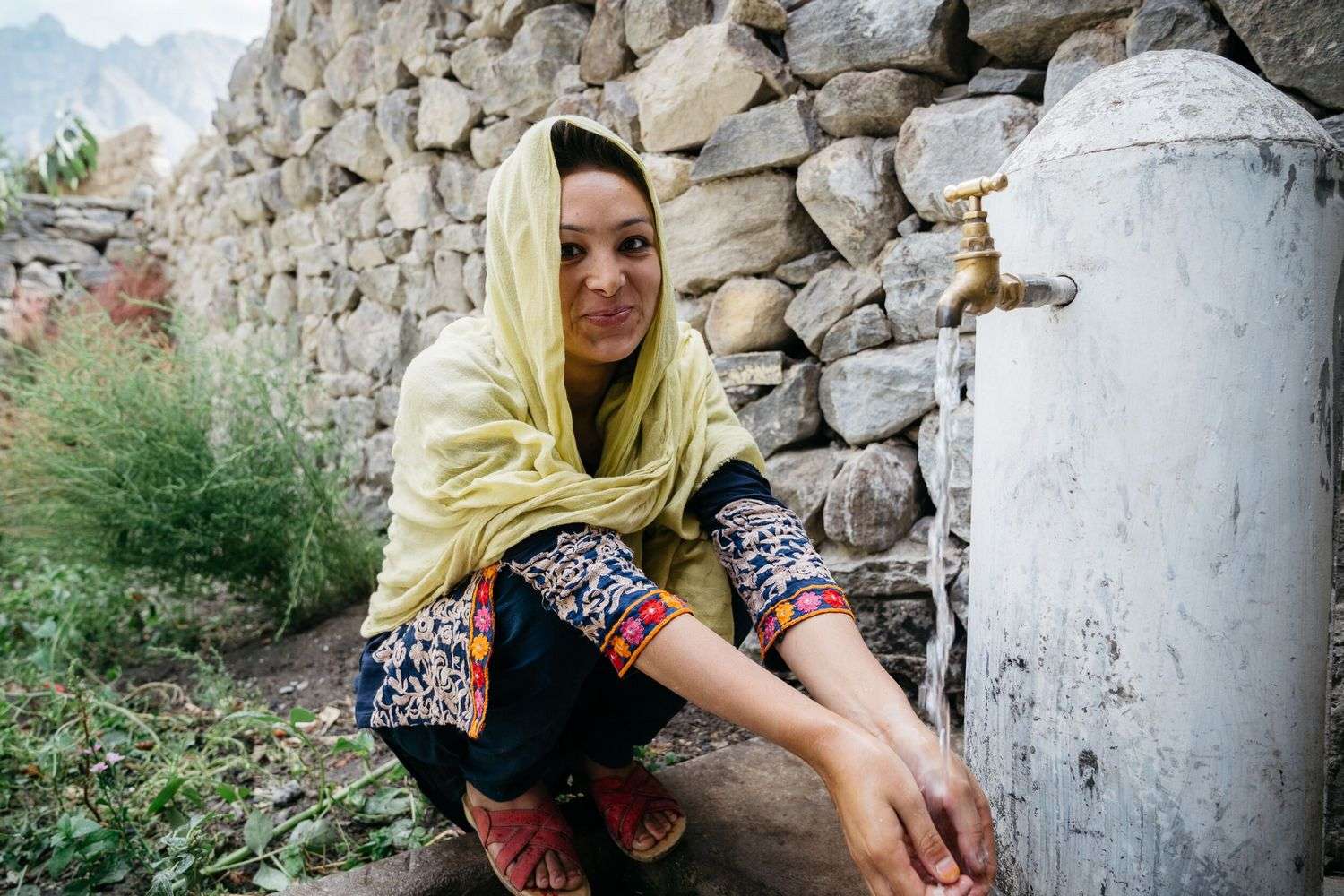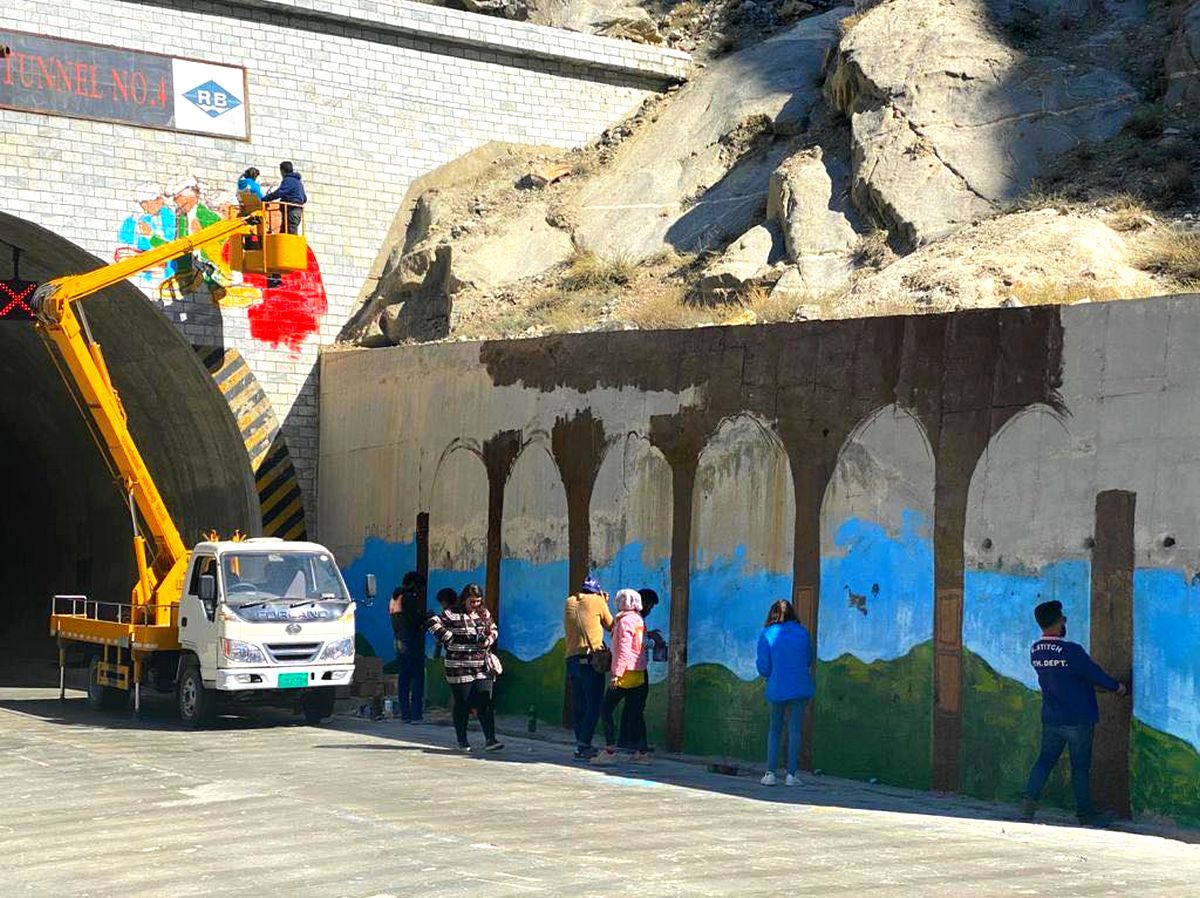Hunza
Father of Burushaski language laid to rest in his hometown of Hyderabad, Hunza
Father of Burushaski language, Allamah Nasir al-Din Nasir Hunzai, was laid to rest in his hometown of Hyderabad in the central Hunza district 23 days after his death. Allahah Nasir had died in United States on January 15, 2017. His burial took place in huge funeral attended by thousands of good wishers of Burushaski language and well known poets, liguists, authors and other social personalities from across Gilgit-Baltistan and Chitral.

Father of Burushaski language, Allamah Nasir al-Din Nasir Hunzai, was laid to rest in his hometown of Hyderabad in the central Hunza district 23 days after his death. Allamah Nasir had died in the United States on January 15, 2017. His burial took place in a huge funeral attended by thousands of well-wishers of Burushaski language and well-known poets, linguists, authors and other social personalities from across Gilgit-Baltistan and Chitral.
The funeral was well managed to accommodate thousands of people under tight security. Volunteers and law enforcement agencies did a tremendous job to overcome the space barriers of a small multi-purpose ground in the heart of Hyderabad town.
Earlier, the dead body of Allamah Nasir was flown from Texas to Lahore and later brought to Hunza by road. The funeral was supposed to be held on January 5, however, due to a major road blockage on Karakoram Highway, the body could not be brought to Hunza on time.
Hours before the body was brought for burial, thousands of people had gathered in Hyderabad to pay their final respect to the recipient Sitara-e-Imtiaz. Family and close relatives of Allamah Nasir were also among the hundreds of people who joined the procession from Gilgit.
Prominent people who attended the funeral included famous poet Abdul Khaliq Taj, member of Arbab-e-Zauq Jamshed Dukhi, linguist and historian Sherbaz Barcha, acclaimed mountaineer Nazir Sabir, former Speaker of Gilgit-Baltistan Legislative Assembly (GBLA) Wazir Baig, and Imam-e-Jumma wal Jamat Hoper Nagar Sheikh Mohammad Taqi Abidi.
Talking to the attendants, various prominent personalities paid their tribute in recognition of Allamah Nasir Hunzai’s immense contributions for not only Burushaski speakers and Ismailis but for a wide audience of global languages and religions.
Sherbaz Hunzai, Meher Angez, Abid Ali, Mir Aman, Barkat Ali and Amir Hayat Amir Hunzai recited the writings of Allamah Nasir himself.
Izhar Hunzai, the eldest son of Allamah Nasir, thanked the attendants for their presence to pay final tribute to his father. He recognized the services of the volunteers, security agencies, local government, the government of KPK and government of Gilgit-Baltistan for their support provided to ensure a disciplined funeral.
Allamah Nasir Hunzai has written over a hundred books and received an honorary doctoral degree for his extensive work on Burushaski language.
Read this article in Urdu

Climate
Aga Khan Agency for Habitat and Government of Gilgit-Baltistan sign the Resilient Hunza Plan

The Aga Khan Agency for Habitat (AKAH Pakistan) has signed a partnership agreement with the Government of Gilgit-Baltistan to conduct a study for a sustainable solution of drinking water supply for central Hunza sourced from Attabad lake. The feasibility will include Hazard Vulnerability and Risk Assessments of the supply line and eight settlements. The agreement was signed between the Planning and Development Department of Gilgit Baltistan, the District of Hunza, and the Aga Khan Agency for Habitat in Hunza.
Central Hunza faces acute water shortage as most settlements depend on two glacial melt streams (Hassanabad Nallah and Ultar Nallah) as their primary source of water. The recent glacial lake outburst floods from both glaciers have severely impacted water supply and other community infrastructure. Growth in tourism to the area, critical for economic development, adds further pressure on the region’s water resources. Using its rich experience around the design and implementation of water supply systems in mountain areas combined with its hazard risk assessment and overall habitat planning expertise AKAH will provide technical support to the Government on this highly important study.
Speaking at the occasion, Mr. Syed Abrar Hussain Shah, Additional Chief Secretary Gilgit-Baltistan, said that “The Government of Gilgit Baltistan is grateful to Aga Khan Development Network for realizing several development projects, reducing poverty and empowering communities. We value AKAH’s support to the government of GB on various development initiatives particularly around climate change and providing access of clean drinking water to the rural and urban areas in Gilgit Baltistan.”
In his address, Mr. Fayaz Ahmed, Deputy Commissioner Hunza, shared that “This partnership with AKAH will enable us to provide sustainable access to clean drinking water to 5,500 households, commercial entities, health and education facilities from eight settlements of central Hunza including Faizabad, Altit, Karimabad, Ganish, Garelth, Haiderabad, Dorkhand and Aliabad This feasibility study will not only identify solutions for the current needs of the community but also help boost the tourism potential of the area in the years to come”
In his remarks, Mr. Nawab Ali Khan, Chief Executive Officer, Aga Khan Agency for Habitat, Pakistan shared that “AKAH has the mandate of creating resilient human habitats and we will support any initiative that is aligned with our mandate.” He further said “AKAH is thankful to the government for all its support that has enabled us to serve communities in need.”
Over the last two decades, the Aga Khan Agency for Habitat, Pakistan has provided 500,000 people with water and sanitation facilities across Pakistan mainly in mountain communities. This has resulted not only in reducing waterborne diseases but also improved health and economic conditions as well as reduced the burden on women and girls of fetching water from long distances.
Environment
Analyzing the recent “Sponsored Graffiti” in Hunza along the Karakoram Highway

The sensitivity and emotional attachment of people of Gilgit-Baltistan with the subject of wall chalking and interventions in the natural/cultural landscape have always been a hot topic. The people are very well aware as compare to any other city in Pakistan about art, its context, quality of art, and techniques to adopt. Highly professional artists in the field belonging to Hunza have long set a quality standard for the people to identify, differentiate and critic on an artwork which one doesn’t see very often in practice in any other city.
The inclination and awareness of people specifically youth towards arts, music and other forms of creative industries is increasing with every passing day. The professionals in the field of visual arts, music, and other forms of creative industry have proved themselves on national and international levels.

The underground art of graffiti has its origins in the late 1960s in Philadelphia USA writers such as Cornbread and Cool Earl went about writing their names to gain the attention of the community and media. Graffiti a practice of defacing a surface if done without consent is vandalism, with consent its a “work of art” used as a political tool.
The vandalism of natural mountains and rocks on side of Karakoram Highway – KKH through graffiti has long associated with the ugly painted names and slogans of “Senator Talha Mehmood”, the repeating visuals add more pain to this hectic journey on Karakoram Highway (KKH) while traveling from Islamabad to Gilgit. People highly discouraged the act and collectively discouraged any form of graffiti on rocks, natural landscape with or without consent.

The recent efforts of “Graffiti” by Sweet tooth and Gobbis Paints have been collectively discouraged as a hindrance in the natural beauty of its unique landscape. This model of graffiti may work very well in any other city and context, but it has faced heavy criticism and protest from everyone. The locals are very sensitive and emotional, and demanded immediate discontinuity of this activity. For any public art /urban intervention local context and communities have to be involved, the art has to be evolved from the society, communities , art cannot be imposed but it has to “be Evolved”.
Highly professional and local artists be involved to have a better understanding of context to define the form and its need. This activity could have been planned in a more creative way instead of just picking only one form of art (wall painting/graffiti), as any intervention in a natural/historic environment has to be reversible and temporary. The immediate response and raising a voice for this work is highly appreciated which clearly indicates the awareness and exposure of the people in Hunza for art and its quality.

The activity has been discontinued by the district government but the same critic and discouragement should be evident for the growing unplanned concrete buildings, growing temporary steel sheds and hotels, disappearance of community spaces, growing vehicular movements disturbing and polluting the environment, natural landscape and cultural fabric. I leave the discussion with few questions for everyone to think about :
1. Are we sensible enough before constructing new ugly concrete hotels and homes? “Abundant local materials”.
2. Do we consider how to involve any professional before construction/intervention in a natural/historic landscape?
3. Does the district government or the stakeholders (NGOs, Civil Society, Community, Political parties) were able to chalk out a policy for the future developmental challenges with growing investments in the tourism industry in Gilgit-Baltistan specific to Hunza?
4. Does any political party has this in their election manifesto to form an authority for policy making, by-laws and implementation of the guidelines for new constructions/interventions in Hunza?
These are the real issues and challenges everyone of us have to think and share.
-

 Culture6 years ago
Culture6 years ago5 Facts You Might Not Know About the Baltit Fort Hunza
-

 Diamer8 years ago
Diamer8 years ago4 Toursits Including 2 Kids Dead at Babusar Pass in a Van Accident
-

 Business & Economy5 years ago
Business & Economy5 years agoKarakoram Area Development Organization (KADO) appoints its first-ever female CEO
-

 Culture8 years ago
Culture8 years agoGinani Festival Held at Baltit Fort in Karimabad Hunza
-

 Pink8 years ago
Pink8 years agoInternational Women’s Day: 15 Inspiring Women from GBC who are breaking barriers despite all odds
-

 Hunza5 years ago
Hunza5 years agoBrigadier Inayat Hussain from Hunza promoted to the rank of Major General in Pakistan Army
-

 Quotes9 years ago
Quotes9 years ago10 inspirational quotes of Aga Khan IV on his birthday
-

 Hunza6 years ago
Hunza6 years agoNewlywed CSS Officer and husband found dead in their hotel room in Hunza





























